|
The 4 Disciplines of Execution, first published in 2004 by Stephen R. Covey, was revised and rereleased in 2012 by his son Sean Covey and colleagues Chris McChesney and Jim Huling. It covers a comprehensive system for executing change across a company.
The 4DX system is organized around four principles: 1) Focus on a small number of wildly important goals (WIGs). The more you try to do, the less you actually accomplish. So narrow your focus and make tough choices. 2) Act on lead measures contributing to those goals. The WIGs still need to be measured. But measuring the actions to achieve the WIGs will support accountability for what’s truly actionable. 3) Keep a compelling scorecard. It must be so simple that team members can track their own score and they determine instantly if they are winning or losing. 4) Create a weekly cadence of accountability to contribute to moving the score. Unless we consistently hold each other accountable, the goal naturally fizzles in the whirlwind of the day-to-day. 4DX is a detailed and highly specified system refined by the FranklinCovey organization over the last decade and a half. I’m usually wary of any book that claims its system will work well every time. However, I can say that 4DX does work for executive teams (alot of the time - more on that below). It’s very similar to the approach from Scaling Up and the 7 Attributes of Agile Growth that we use with leadership teams to help them execute their strategies. And that works. That said, how well these execution disciplines work depends on a number of things, such as:
While 4DX is a proven execution method, the results will be limited if these other more foundational aspects of the business aren’t also worked on. This is the benefit of a holistic, integrated approach to business growth like Scaling Up or the 7 Attributes of Agile Growth. They go beyond symptoms to address the root causes of top team challenges, stymied company growth and CEO frustration. Book: 352 pages, full audio - 8 hours 30 minutes, abridged audio – 3 hours 40 minutes. Summary on Soundview: 8 pages, 22 minute audio. On GetAbstract: 5 pages, 10 minute audio. How can you improve your team’s execution? To find out how to improve your execution to grow more easily, quickly and profitability, AND enjoy the ride, try our complimentary Agile Growth Checklist. This self-service questionnaire takes 5 to 10 minutes to complete. You'll receive the checklist with your responses immediately. Within 24 hours, you'll receive a compiled report highlighting areas to improve. Complete section 4 to check your execution practices. Or complete all 7 sections to find out how your company is doing in each of the 7 areas needed to produce more rapid, profitable and sustainable growth. This report is complementary and involves no obligation. Little did I know I was embarking on a tricky mental adventure when I started reading The Goal, by the late Eli Goldratt. I was glad to find out the book was written as a business fable, which made it easier to understand than a technical style.
The Goal walks us through the journey of a manager who is told he has only three months to turn his plant around, all while his marriage is on the brink, in part, due to overwork. The manager figures out, with his team, what the ultimate goal of his plant is, how to make that goal relevant to their people and how to optimize the plant to achieve the goal. The story walks the reader through a mind shift from seeing a plant as a collection of parts to be individually optimized, towards seeing it as a whole system that requires careful coordination of the parts. Based on the same underlying principles as Lean manufacturing, the approach addresses the root causes of inefficiency by identifying and resolving bottle-necks between these different parts of the plant to improve the productivity of the whole. The manager also applies this approach to a company-wide scenario to determine the most important things to improve. This is the same way we have our clients prioritize changes and improvements in their business. The story also weaves in other useful best practices, such as tackling company-wide issues as a united management team and using outside expertise, lessons learned discussions, transparency and vulnerability. Book: 408 pages; 11 hour 45 minute audio book. How can you improve your efficiency? To find out how to improve your systems and processes to grow more easily, quickly and profitability, AND enjoy the ride, try our complimentary Agile Growth Checklist. This self-service questionnaire takes 5 to 10 minutes to complete. You'll receive the checklist with your responses immediately. Within 24 hours, you'll receive a compiled report highlighting areas to improve. Complete section 7 to check your company’s systems and processes. Or complete all 7 sections to find out how your company is doing in each of the 7 areas needed to produce more rapid, profitable and sustainable growth. This report is complementary and involves no obligation. As more business owners, CEOs and presidents become aware of leadership operating systems like Scaling Up and the 7 Attributes of Agile Growth, it’s important to remember that these frameworks stand on the shoulders of one of the first frameworks developed for mid-sized companies: Mastering the Rockefeller Habits, by Verne Harnish.
Mastering the Rockefeller Habits, like the methodologies that followed in its footsteps, describes a compilation of several tools developed and proven by other great thought leaders, and packaged for owners, CEOs and presidents of mid-sized companies. Released in 2001, the book, for the first time, brought together concepts like getting the right people doing the right things, creating a one page strategic plan, setting quarterly metrics and priorities, and having an effective meeting rhythm. Verne was inspired by the biography and executive team routines of the renowned John D. Rockefeller, who led Standard Oil for 19 years, as well as the practices of many other business leaders, like Jack Welch of GE, Tom Meredith of Dell, Tom Siebel of Siebel Systems and Bill Gates, founder of Microsoft. The best practices covered in Mastering the Rockefeller Habits are now corner-stones of the more recent Scaling Up system (also spear-headed by Verne Harnish) and the more holistic 7 Attributes of Agile Growth system, summarized in books by the same names. Yet Mastering the Rockefeller Habits is still worth the read. Beyond seeing some of these best practices from another perspective, there are a couple of tools that haven’t been carried forward into later systems: how to de-hassle your company (Chapter 7) and how to make banks compete to loan you money (Chapter 10). Scaling Up and the 7 Attributes of Agile Growth focus instead on finding cash from within the company (EOS doesn’t directly address cashflow and profitability). Yet, financing is still often needed. And Mastering the Rockefeller Habits provides some great advice on this. Book: 150 pages, 4 hour audio. GetAbstract Summary: 5 pages, 10 minute audio. How can you strengthen your team’s habits? To find out how to create more discipline on your executive team to grow more easily, quickly and profitability, AND enjoy the ride, try our complimentary Agile Growth Checklist. This self-service questionnaire takes 5 to 10 minutes to complete. You'll receive the checklist with your responses immediately. Within 24 hours, you'll receive a compiled report highlighting areas to improve. Find out how your company is doing in each of the 7 areas needed to produce more rapid, profitable and sustainable growth. This report is complementary and involves no obligation. As you work with your leadership team on building your business and organization to grow more easily, profitably and sustainably, it helps to have a methodology or set of tools to use, rather than figuring out on your own what best practices to implement.
Over the 17 years I’ve been working with CEOs and their leadership teams, I’ve learned to implement a half dozen methodologies, including the Scaling Up method and the 7 Attributes of Growth tools. Traction, a book written by Gino Wickman, summarizes another such methodology: EOS (the Entrepreneurial Operating System). Like Scaling Up and the 7 Attributes of Growth, it goes beyond setting mere mission, vision, values and priorities to also address people and execution. This isn’t coincidental. Gino was a coach in our network several years ago and used our tools. He then founded his own network of coaches and wrote Traction to capture his approach. Scaling Up and the 7 Attributes of Growth were written since that time and included many best practices that Gino did not, like the daily huddle and cash flow optimization tools. That said, Gino includes a couple of unique tools I have found useful, for example, the People Analyser and the Visionary-Integrator model, which I sometimes implement with the CEOs and leadership teams I work with. The People Analyser is a simple form to quickly evaluate each employee against the company’s core values. The companies I work with use this as input to our talent assessment where leadership team members assess each of their direct reports and then hold each other accountable to coach them up or out. The Visionary-Integrator model is a way for dynamic, creative owners and CEOs to pick and effectively work with a co-CEO who is stronger in the disciplined, structured and organizational aspects of running the company that are needed to enable predictable, profitable and sustainable growth. It enables the owners to do what they do best while also having someone with the other critical skills needed to truly move the business forward. Gino packages the best practices he selected into the six areas of EOS: Vision (including high level strategy and execution planning), People, Data (metrics), Issues, Process and Traction (meeting rhythms). EOS and Traction is a solid, simple approach with easy-to-use tools. In my experience, it works best for smaller companies up to about 25 employees. Beyond that, there tend to be certain challenges that come up that EOS doesn’t address, for example: leadership team cohesiveness, team member productivity, effective hiring, leadership mindset, cascading metrics, planning priorities, clear competitive strategy and financial optimization, planning and forecasting. By contrast, Scaling Up and the 7 Attributes of Agile Growth include most of the best practices found in EOS, and also address these additional challenges as they come up. The 7 Attributes of Agile Growth then go beyond to tackle some of the more nuanced challenges of growth like customer experience, systems and change and leaders’ health. See last month’s Book of the Month for more information. If you’re looking for a simplified methodology with user-friendly terminology and a detailed how-to playbook to get started implementing a set of best practices, Traction may do the trick. Book: 251 pgs, 6h56m audio. How can you get more traction? To find out how to make more progress to grow more easily, quickly and profitability, AND enjoy the ride, try our complimentary Agile Growth Checklist. This self-service questionnaire takes 5 to 10 minutes to complete. You'll receive the checklist with your responses immediately. Within 24 hours, you'll receive a compiled report highlighting areas to improve. Find out how your company is doing in each of the 7 areas needed to produce more rapid, profitable and sustainable growth. This report is complementary and involves no obligation. I’ve found that a growing number of CEOs and executive teams are becoming familiar with leadership operating systems for midsize companies; systems like The Rockefeller Habits, Scaling Up or the Entrepreneurial Operating System (EOS), that are summarized in books by the same names.
These systems have been built on each others’ shoulders: the Rockefeller Habits compiling best practices from a variety of thought leaders, EOS expanding on the habits and making them more accessible to small businesses, and Scaling Up adding more best practices to strengthen strategy, profitability and cash flow. When CEOs and their teams successfully implement these methods, then growth, and even profitable growth becomes easier, especially if they're working with a leadership team coach. However, as companies grow, the journey becomes more complex and some gaps can become apparent in these systems. I’ve also found that some companies struggle to implement these methods because certain elements aren’t covered in much depth; things like accountability, how to set metrics, targets and rocks, and how to get executive team alignment. While I use the Scaling Up method and the Rockefeller Habits with the companies I work with, as well as some of the tools that are unique to EOS, I also rely on a system that builds on their shoulders to fill the gaps and address some of the more subtle challenges of growth: The 7 Attributes of Agile Growth. The book, again by the same name, was written by Keith Cupp, CEO of Gravitas Impact Premium Coaches, the global community of executive team coaches I am a part of. The 7 Attributes of Agile Growth is a monograph, a relatively new format of book, being made popular by certain thought leaders, like Jim Collins with his Flywheel monograph. Monographs are relatively short, at 40 to 80 pages, designed to cover a narrow topic or provide a high level overview, and be read in one sitting, like on a short-haul flight. The book outlines the attributes of companies that are successful at not only growing, but also overcoming the new challenges that come with growth and adapting to a constantly changing environment in order to keep growing sustainably and profitably over time. These 7 Attributes include Leadership, Talent, Strategy, Execution, Profit, Customer and Systems. The leadership attribute is where the executive leadership team has done the work to become authentic, healthy, and aligned. Talent is about leaders and managers pursuing a culture of trust, results, and accountability with their people. The strategy attribute is where the executive team has defined and evolved a unique and valuable position in the market, and it can be easily recalled and stated by all employees in one phrase. Execution includes having annual, quarterly, and personal targets and priorities that are visible, measured, and activated successfully with a 13-week sprint. The profit attribute is where cash flow has been optimized, and the executive team understands the forces and levers in their control to increase profit and cash. The customer attribute is where the core customer has been defined, a compelling promise has been crafted, and the customer lifecycle has been systematized. Systems is where the organization has defined methods to optimize core processes, change management, decision-making, and technology use. The 7 Attributes of Agile Growth is an introductory monograph to the overall operating system. Separate monographs are being developed for each attribute. So far, four monographs have been released, going into some depth on: accountability, profit and cash flow optimization, A player talent, and competitive strategy. Monograph: 56 pages. How can you grow an agile company? To find out how to implement a leadership operating system to grow more easily, quickly and profitability, AND enjoy the ride, try our complimentary Agile Growth Checklist. This self-service questionnaire takes 5 to 10 minutes to complete. You'll receive the checklist with your responses immediately. Within 24 hours, you'll receive a compiled report highlighting areas to improve. Find out how your company is doing in each of the 7 areas needed to produce more rapid, profitable and sustainable growth. This report is complementary and involves no obligation. Scaling Up, written by Gazelles’ founder, Verne Harnish, and contributing coaches in 2014, is a summary of the leadership and management system I use as a foundation for my work with CEOs and executive teams. It builds on Verne’s 2001 book, Mastering the Rockefeller Habits.
It’s a compilation of countless best practices, tools and stories that help CEOs and their leadership teams focus, align and grow their companies. It organizes these best practices into a fairly holistic system set up to meet the needs of midsize companies. The book, and management system, address four critical decision areas: People, Strategy, Execution and Cash. The People section is about ensuring that all our employees are happy and engaged, that we would enthusiastically rehire them all, and that we’re creating a harmonious culture of accountability. Strategy tackles building strong, sustainable topline revenue growth by creating a unique offering in the market that is valuable to our most profitable type of customers. Execution is about reducing drama and converting revenue efficiently into industry-leading profitability. The Cash section helps ensure companies have consistent sources of cash to have options, make wise decisions, and fuel growth. The Scaling Up system is flexible and scalable. It includes a number of simple, practical & actionable tools, like the popular One Page Strategic Plan. One reaction I often hear from CEOs is “there are so many tools and best practices crammed into this book…it’s like drinking from a firehouse”. And it’s true, as a summary of hundreds of best practices, most pages refers to several other well known - and lesser known - thought leader books. And there’s no real roadmap in the book for how to implement them all, or where to start. Without an executive team coach to guide the process, the book can feel a bit overwhelming. Maybe surprisingly, from an Executive Team Coach’s perspective, there are some important areas that aren’t addressed in the book… areas that have come to light since the book’s launch in 2014. I’ll address these other areas in my next book introduction, on The 7 Attributes of Agile Growth, another methodology I use with CEOs and executive teams to build on Scaling Up. Book: 245 pgs, 8h50m audio. Get-Abstract summary: 5 pgs, 10m audio How can you scale up your company? To find out how to implement an integrated system to grow more easily, quickly and profitability, AND enjoy the ride, try our complimentary Agile Growth Checklist. This self-service questionnaire takes 5 to 10 minutes to complete. You'll receive the checklist with your responses immediately. Within 24 hours, you'll receive a compiled report highlighting areas to improve. Find out how your company is doing in each of the 7 areas needed to produce more rapid, profitable and sustainable growth. This report is complementary and involves no obligation. I’ve long been interested in strengths-based development. So I was glad when I finally dug into Strengthsfinder 2.0 from Gallup, and written by Tom Rath.
Tom worked with the late Donald O. Clifton, father of strengths-based psychology, and author of Now, Discover Your Strengths with Marcus Buckingham. This book, Tom’s sequel to Donald and Marcus’, coincided with the release of version 2.0 of the Strengthsfinder assessment. Tom reiterates the message from the first book: we are better off focussing on roles and activities where we can further develop our strengths, rather than trying to become strong in areas we simply are not. The storyline of the underdog is a common one in our culture. The unlikely candidate for greatness in a certain sphere overcomes their weaknesses and beats the odds. However, it’s also the path of most resistance and rarely works. The reality is that someone who has always struggled in a certain area is unlikely to become great at it. Rather, our best opportunity for growth, and greater productivity and impact, lies in our areas of strength. Here, we improve easily and quickly, achieve and refine excellence, and can take our impact to new heights. The rest of the book describes the 34 strengths using the same language as the original book. For each strength, it adds “ideas for action” to capitalize on it. If you’ve read the first book, you may find this one light on added insights. New readers will get big value from it and the assessment. Used by a leadership team, they can help team members be more productive, enjoy their work more, and collaborate with each other more effectively. Book: 192 pages; Audio Book: 4 hours 9 minutes. How can you develop talent in your company? To find out how to develop your leaders and talent to grow more easily, quickly and profitability, AND enjoy the ride, try our complimentary Agile Growth Checklist. This self-service questionnaire takes 5 to 10 minutes to complete. You'll receive the checklist with your responses immediately. Within 24 hours, you'll receive a compiled report highlighting areas to improve. Complete section 2 to check your talent processes. Or complete all 7 sections to find out how your company is doing in each of the 7 areas needed to produce more rapid, profitable and sustainable growth. This report is complementary and involves no obligation. Underpinning the Scaling Up system and 7 Attributes of Agile Growth framework I use with my clients are methods developed by many great business thought leaders.
One of these methods is the Where to Play choices in A.G.Lafley and Roger L. Martin’s 2013 book Playing To Win: How Strategy Really Works. The book draws on their experience working together on the strategy transformation of Proctor & Gamble from 2000 to 2009, and distills strategy down to its essence so it’s useful and effective for any size company. They underline first that strategy is about choices. Making trade-offs to focus a company on the higher opportunities for success, rather than spreading a company thin. Their strategy framework includes choosing: 1) how you define winning, 2) where you will play in the market, 3) how you’ll win/compete, 4) what capabilities must be in place and 5) what management systems are needed. Playing to Win helps make better sense of strategic terms like vision, target market, value proposition, core competencies, etc., and helps tie it all together in a logical way. However, it offers few practical tools or specific processes. And some of the long P&G stories seem to miss the point. That said, it’s a great book for those who’ve been exposed to strategic thinking tools and want to deepen their understanding. Book: 272 pgs, 7h9m audio. How can you develop a winning strategy? To find out how you can strengthen your strategy and grow more easily, quickly and profitability, AND enjoy the ride, try our complimentary Agile Growth Checklist. This self-service questionnaire takes 5 to 10 minutes to complete. You'll receive the checklist with your responses immediately. Within 24 hours, you'll receive a compiled report highlighting areas to improve. Complete sections 3 and 6 to check your competitive strategy. Or complete all 7 sections to find out how your company is doing in each of the areas needed to produce more rapid, profitable and sustainable growth. This report is complementary and involves no obligation. It’s hard to find a business leader who has not read Jim Collins’ Good to Great. Released 20 years ago, it might just be the most referenced business book of all time (think “get the right people on the bus”).
Collin’s most recent full length book, Great By Choice: Uncertainty, Chaos, and Luck--Why Some Thrive Despite Them All, was written with Morten T. Hansen. It’s received less attention, but packs just as much research-based punch. Building on the lessons from Good to Great, the authors share principles discovered from companies that performed ten times better than their industry average amid a highly unstable business environment. These business resilience principles include:
In a world facing more uncertainty than ever, Great by Choice offers timeless advice for any size company to succeed regardless of the economic environment. With Collin’s sound research approach, it’s advice you can take seriously. Book: 256 pages. Audio book: 8 hours, 45 minutes. Book summary found on Soundview: 4 pages, 18 minute audio. How can your company thrive regardless of circumstance? To find out what you can strengthen to thrive and grow more easily, quickly and profitability, AND enjoy the ride, try our complimentary Agile Growth Checklist. Ths self-service questionnaire takes 5 to 10 minutes to complete. You'll receive the checklist with your responses immediately. Within 24 hours, you'll receive a compiled report highlighting areas to improve. Find out how your company is doing in each of the 7 areas needed to produce more rapid, profitable and sustainable growth. This report is complementary and involves no obligation. In 2010, while I was working at Concentra Financial, the late Myrna Bentley, then CEO, caught me in the elevator one day after an executive team strategic planning session I had led, and gave me a surprise gift: the book Blue Ocean Strategy.
It was just one of the many examples of Myrna’s generosity that I witnessed there. And the book ended up having a big influence on my work with many companies. Written by W. Chan Kim and Renée Mauborgne, the Blue Ocean Strategy approach suggests that a business’ current market is often a bloody ocean, where competitors fight to the death for the same limited set of customers. The authors describe how to, instead, open up a significant “blue ocean” where competitors have yet to appear. The book describes structured ways to look for opportunities to fulfil the unmet needs and preferences of non-customers – those who aren’t buying from us or our competitors – opening up a whole new market. For my clients, the approach has also been helpful for finding a profitable niche within their current market and clarifying their competitive strategy to best meet the needs of that niche. It has also helped reduce costs by identifying and eliminating features customers don’t really value. I am grateful to Myrna, and all my other mentors, for the models and best practices they’ve shared with me over the years, including Blue Ocean Strategy. Book: 216 pages. Audio book: 6 hours. Soundview summary: 4 pages, 16 minute audio. GetAbstract summary: 5 pages, 10 minute audio. How can you improve your competitive strategy? To find out what you can improve in your competitive strategy to grow more easily, quickly and profitability, AND enjoy the ride, try our complimentary Agile Growth Checklist. This self-service questionnaire takes 5 to 10 minutes to complete. You'll receive the checklist with your responses immediately. Within 24 hours, you'll receive a compiled report highlighting areas to improve. Complete sections 3 and 6 to check your competitive strategy. Or complete all 7 sections to find out how your company is doing in each of the areas needed to produce more rapid, profitable and sustainable growth. This report is complementary and involves no obligation. Having read many books on competitive strategy, I’ve often seen references to Michael’s Porter’s seminal book, Competitive Advantage, written in 1998.
I’ve always thought it would be a helpful read. And although I expected it to be dry and academic, I decided to give it a chance. Michael Porter is a highly respected Harvard Business School researcher, advisor, speaker, author and teacher. Competitive Advantage outlines the three categories of competitive strategy that Porter and his team discovered among successful companies. They include: Cost Advantage, Differentiation, and either of these applied to a Focused Market rather than the whole market. The book covers how to identify and strengthen the inter-related activities in a company that allow for each type of competitive advantage, as well as how to leverage technology in that effort. It goes into detail on segmenting markets, evaluating competitors, introducing complimentary products and using offensive and defensive strategies. It’s a massive read: over five hundred pages of rather technical writing with only the occasional real-world example. I was right. While brilliant and insightful, it’s not for the faint of heart. Book: 535 pages, 21 hour and 23 minute audio book. How can you improve your competitive advantage? To find out what you can improve in your competitive strategy to grow more easily, quickly and profitability, AND enjoy the ride, try our complimentary Agile Growth Checklist. This self-service questionnaire takes 5 to 10 minutes to complete. You'll receive the checklist with your responses immediately. Within 24 hours, you'll receive a compiled report highlighting areas to improve. Complete sections 3 and 6 to check your competitive strategy. Or complete all 7 sections to find out how your company is doing in each of the areas needed to produce more rapid, profitable and sustainable growth. This report is complementary and involves no obligation. There are many approaches to leading change to solve a problem.
Most include common practices, such as creating a sense of urgency, communicating the vision, celebrating early wins, etc. However, these methods fall down with a certain kind of problem called “adaptive challenges”. One indicator of adaptive challenges is that they persist after attempts to solve them. The Practice of Adaptive Leadership, by Ronald Heifetz, Marty Linsky and Alexander Grashow, goes through how to distinguish adaptive challenges from conventional “technical problems”, and how to successfully lead adaptive change. Technical problems are problems an organization has already developed the know-how to solve. For technical problems, one or more experts in an organization can identify and solve the problem on their own, with others adjusting in minor, known and predictable ways. Adaptive challenges, on the other hand, require a response that is outside the organization’s current knowhow. There is no one expert in the organization who can solve an adaptive challenge. It requires people to do their part. You can’t take the problem off the people because the people are part of the problem. Their ownership and responsibility-taking for the problem becomes part of the solution. Adaptive challenges require people in the organization to change and often require multiple perspectives to identify and solve them. Most problems are bundled. There are some problems that are purely technical. But most problems include both a technical problem component and an adaptive challenge component. Indicators of adaptive challenges include recurring crisis and persistent conflict. This happens when an adaptive challenge hasn’t been addressed fully in the past, because a technical fix was insufficient, and so the challenge resurfaces again and becomes a crisis or persistent conflict. Changes in leaders’, managers’ or employees’ actions and behaviors are great examples, as well as changes in culture and relationships. The authors argue the biggest mistake leaders make is dealing with adaptive challenges as though they are technical problems. That’s one big reason change efforts fail. This happens because leaders often assume any problem is a technical problem. So the leader throws technical fixes at an adaptive challenge. And so the problem persists. People get disappointed because the problem doesn’t go away. Employees feel the leaders should give them a solution, as do the leaders. This creates a dependency loop where leaders over-promise what they can deliver and employees are continually disappointed. Leaders need to instead ask employees to realize that there are alot of problems for which there are no quick solutions, where their own responsibility-taking will be needed, where they’ll have to put in effort to figure out solutions together, and where they themselves will need to develop knowhow to act or behave in new ways. The leader’s job isn’t to provide the answers but instead to frame the questions for which the answers are discovered over time by the collective intelligence of the people. This book, building on the authors’ two previous ones, acts as a practical guide. This one is a must-read for leaders looking to make lasting change on the persistent problems that have eluded them. Book: 304 pages. GetAbstract book summary: 5 pages, 10 minute audio. What could be changed and improved in your company? To find out what changes and improvements you could make to grow more easily, quickly and profitability, AND enjoy the ride, try our complimentary Agile Growth Checklist. This self-service questionnaire takes 5 to 10 minutes to complete. You'll receive the checklist with your responses immediately. Within 24 hours, you'll receive a compiled report highlighting areas to improve. This report is complementary and involves no obligation. In last week’s blog, I shared a podcast highlighting how CEOs can develop their leadership team members into A-Players by looking in the mirror at their own management style.
The book, 12: The Elements of Great Managing, by Rodd Wagner and James K. Harter, can help. It highlights twelve key management practices that have the greatest impact on employee engagement as shown by increases in several tangible business performance metrics. The book is based on two decades of Gallup surveys, interviews, focus groups and statistical analysis. 12 is a breath of fresh air for business owners, leaders and managers overwhelmed by the wide variety of management models and books they’ve come across. It helps by highlighting what makes the biggest difference. The 12 elements, written from the perspective of the employee, are:
Note that 12 does not hone in on what specific management behaviors or organizational systems to change at a deeper level to strengthen those twelve elements. The twelve elements are those seen and experienced by employees. Less visible dynamics such as leadership team functioning, culture, authenticity and trust underlie them. Yet, I have found 12 to be a helpful tool for leaders and managers I work with. Many management frameworks can either be too high level to be actionable or lose leaders in the weeds with rheams of behaviours and tactics while forgetting the impact leaders need to have on their people in the first place. 12, on the other hand, provides leaders with a relatively small set of clear, tangible practices enabling their people to develop and be more engaged. From there, leaders can clearly identify what they are doing that is helping or getting in the way. By strengthening these 12 practices in yourself, you can also inspire your leadership team members to strengthen how they manage their people, creating a positive impact on employee engagement, productivity and results throughout your company. Book: 280 pages. Audio book: 4 hours 15 minutes. Soundview book summary: 8 pages, 20 minute audio. How can you manage your leadership team members more effectively? To find out how to manage your team members to grow more easily, quickly and profitability, AND enjoy the ride, try our complimentary Agile Growth Checklist. This self-service questionnaire takes 5 to 10 minutes to complete. You'll receive the checklist with your responses immediately. Within 24 hours, you'll receive a compiled report highlighting areas to improve. Complete section 2 to check your people management processes. Or complete all 7 sections to find out how your company is doing in each of the 7 areas needed to produce more rapid, profitable and sustainable growth. This report is complementary and involves no obligation. As a CEO, how can we “delegate and elevate"? One way is to ensure we have only A-players on our leadership team.
A great leadership team enables the CEO to entrust the team and its members with getting results consistently and leading change in the company. This frees up the CEO to spend more time leading and less time doing, which is essential for a company to grow and thrive. And so, CEOs need to be skilled at hiring leadership team members. While HR can support the process, the CEO needs to stay highly involved. Who: The A Method for Hiring captures the best method we Gravitas Impact coaches have seen for consistently hiring A players. Unfortunately, most managers use what author Geoff Smart calls “voodoo hiring techniques.” While common, they get poor results. Smart and his firm meticulously developed and tested the A Method over 23 years, simplifying it for mid-size companies from Geoff’s father Brad’s TopGrading system, which is more geared for larger corporate companies. The A Method includes four parts: Scorecard – describes exactly what the person will need to accomplish. While job descriptions tend to capture mere accountabilities and responsibilities, or worse yet, a list of duties, a job scorecard captures the specific results to be delivered. Source – systematically sourcing before you have slots to fill so you have a large pool of high quality candidates when you need them. A small pool generated on short notice is one of the main reasons managers hire less-than-ideal candidates. Short-notice sourcing is often done through advertising or job postings, which will access job-seekers. And job-seekers are often not A players. Select – a series of structured interviews that allow you to gather accurate facts about the person. It’s considered normal for candidates to hide their faults and flaws in a job interview. Getting a complete picture of the person is essential to determining if their weaknesses will be manageable. Sell – ways to persuade the perfect candidate to join. A players are usually already employed or are being sought out by other employers. Selling the candidate increases the odds they’ll go Most companies jump straight into sourcing and selecting without clarity on the results they want the person to accomplish. Or they’re starting from scratch with sourcing, leading to few great candidates. Book: 189 pages. Audio book: 4h47m. Soundview summary: 8 pages, 20m audio. getAbstract summary: 5 pages, 10m audio. How can you hire more A-players in your company? To find out how to have stronger talent and leaders to grow more easily, quickly and profitability, AND enjoy the ride, try our complimentary Agile Growth Checklist. This self-service questionnaire takes 5 to 10 minutes to complete. You'll receive the checklist with your responses immediately. Within 24 hours, you'll receive a compiled report highlighting areas to improve. Complete section 2 to check your A-player processes. Or complete all 7 sections to find out how your company is doing in each of the 7 areas needed to produce more rapid, profitable and sustainable growth. This report is complementary and involves no obligation. Patrick Lencioni is well-known for his business best-sellers: The Five Dysfuctions of a Team (which I introduced here last month), The Ideal Team Player, and Death by Meeting. His last best-seller, The Advantage - Why Organizational Health Trumps Everything Else in Business, is the culmination and integration of his previous works. It’s one of the most comprehensive and accessible books I’ve read on the key elements of an effective organization. In fact, many of the tools and concepts in the Scaling Up system and 7 Attributes of Agile Growth framework we use with companies are found in The Advantage. In the book, Lencioni describes a healthy organization as one with minimal dysfunction, politics, and confusion. Instead, clarity and alignment reign, resulting in strong performance. He argues that organizational health is the greatest advantage any business can have. And yet, it is largely ignored by business leaders. Lencioni clearly and logically lays out the four disciplines to creating a healthy organization: 1) build a cohesive leadership team - essentially the five focus-areas described in the Five Dysfunctions of a team: trust, conflict, commitment, accountability and results; 2) create clarity - of purpose, behaviours (ie. core values), offerings, competitive strategy, priorities, performance metrics and leadership team member roles; 3) overcommunicate clarity - repeated, aligned cascading communication from leadership team members to their direct reports and down the line; 4) reinforce clarity - through human systems - every process that involves people, from hiring and people management to training, compensation and termination. Lencioni then slips in a 5th unofficial, yet critical, discipline titled “The Centrality of Meetings”, drawing from his Death by Meetings framework. In it, he underlines that no action, activity or process is more central to a healthy organization than effective meetings, from the daily check-in (huddle) through to the quarterly off-site. A key point in The Advantage, which may be missed or forgotten, is that the single biggest factor determining whether an organization is going to get healthier, is the genuine commitment and active involvement of the top leader - the owner-operator, CEO or president. Book length: 240 pages, 5 hour 25 minute audio. Soundview summary: 8 pages, 21 minute audio. GetAbstract summary: 5 pages, 10 minute audio. How can you strengthen your organization? To find out how you can make your organization healthier to grow more easily, quickly and profitability, try our complimentary Agile Growth Checklist*. This self-service questionnaire takes 5 to 10 minutes to complete. You'll receive the checklist with your responses immediately. Within 24 hours, you'll receive a compiled report highlighting areas to improve. This report is complementary and involves no obligation. *Many of Patrick Lencioni’s best practices are included in our Agile Growth Checklist, as well as many others developed by world-renowned business leaders, researchers and professionals.
I’m always delighted when I read a Patrick Lencioni book. I enjoy both his clear take on things and his user-friendly writing style. So reading his best-seller, The Five Dysfunctions of a Team, was a no-brainer. In the business fable style that Lencioni is famous for, he tells the story of the leadership team of a technology company. In it, he shows how leadership teams can use his simple model to deliberately improve their alignment, execution and results. Lencioni covers the five critical dysfunctions of a team, which each build on the other. They include: 1) absence of trust - not feeling comfortable being open, vulnerable and real - which leads to 2) fear of conflict - leaving things unsaid and avoiding sharing differing opinions - and therefore 3) lack of commitment - team members don't feel decisions are appropriate or feasible - which results in 4) avoidance of accountability - hiding performance, blaming or making excuses - and therefore 5) inattention to (team) results - not focusing on true progress and organizational impact. After the story, further details on the model follow with tips for working on each dysfunction. Out of all the team effectiveness frameworks I’ve studied and used, this one is the simplest. Yet, it’s still completely relevant and applicable. The Five Dysfunctions framework is also one of the tools in the Scaling Up system and the 7 Attributes of Agile Growth framework that we use with CEOs and leadership teams of mid-sized prairie-based companies. Book: 229 pgs, 3h45m audio. Soundview Summary: 8 pgs, 19m audio. Get-Abstract summary: 5 pgs, 10m audio. How can you strengthen your leadership team? To find out what you can improve in your leadership team to grow more easily, quickly and profitability, try our complimentary Agile Growth Checklist*. This self-service questionnaire takes 5 to 10 minutes to complete. You'll receive the checklist with your responses immediately. Within 24 hours, you'll receive a compiled report highlighting areas to improve. This report is complementary and involves no obligation. Complete section 1 and 4 to check your leadership team* and accountability processes*. Or complete all 7 sections to find out how your company is doing in each of the 7 areas needed to produce more rapid, profitable and sustainable growth. *All of Patrick Lencioni’s best practices are included in our Agile Growth Checklist, as well as many others developed by world-renowned business leaders, researchers and professionals. We can all benefit from making self-care a higher priority as we start off the new year.
This will benefit us certainly, and also our leadership teams, companies and communities. One excellent resource is a book I use with CEOs that represents, what I believe, is the missing link for CEOs of mid-sized growth companies. Written by my colleague, senior Gravitas Impact coach, Kevin Lawrence in Vancouver BC, Your Oxygen Mask First is a breakthrough in the art of leadership, self-management AND self-care. We can find dozens of fantastic books and tools to learn the nuts and bolts of growing a successful company. And there are a few methodologies, like our Scaling Up method and 7 Attributes of Agile Growth, that bring many of those essential tools together to make them more accessible for mid-size companies. However, the missing link is the CEO factor: the leader themselves and their skills for taking care of themselves first, so they can take better care of their people and their business. Your Oxygen Mask First makes clear that it’s a myth that CEOs can build successful companies sustainably by putting everyone else first. In truth, this leads to burn-out and tragedy. It’s a dirty secret we need to talk about. Kevin wrote Your Oxygen Mask First based on the experiences and tools he gained over 20 years as a coach and advisor. The book covers the 17 habits Kevin has tried and tested for leaders to lead well AND take care of themselves, so they have a great company AND a great life. I highly recommend it to any CEO, president or executive leader. Book: 231 pgs, 3h46m audio. Find the book, ebook and audible book here. Are you ready to grow a great top team, company and life? Try our complimentary Growth Fitness Self-Assessment to find out where you, your leadership team and company shine and where you could improve in order to grow, improve profitability, consistency and your quality of life. When it comes to developing a revolutionary product, or responding to one developed by a competitor, why do so many established companies fail?
Innovation thought-leader Clayton Christensen shares his research and guidance in The Innovator’s Dilemma. There are “two principles of good management” commonly taught in business higher education: 1) always listen to and respond to the needs of your best customers, and 2) focus investments on those innovations that promise the highest returns. In practice, however, these principles are often the root causes for a company’s demise. The central idea is that companies become successful by developing their organizational capabilities to do the work needed to sell, produce and deliver products or services to their target market. However, when a related disruptive technology or opportunity emerges, the customer market is somewhat different, at least initially. And the organizational capabilities needed to be successful also differ. Established companies often try to respond to, or develop, a disruptive technology from within their company, using their legacy organizational capabilities. This tends to fail. Alternatively, they change their existing capabilities to support success with the new technology, which usually erodes their core business. The solution, for truly revolutionary technologies, is to spin out a separate team that can develop the new organizational capabilities. Internal teams, by contrast, work best for evolutionary technologies. Note that Clayton Christensen’s research, outlined in this book, aligns well with the findings of Chris Zook summarized in Profit from the Core (which we introduced last month). In that book, Zook outlines how companies are most successful when they innovate with extensions of their existing products and services, extensions that leverage their existing capabilities, rather than entirely new offerings that require different capabilities. The added nugget in Christensen’s research is that entirely revolutionary offerings CAN be successful, but not WITHIN the company. A separate organization, with unique capabilities, needs to be created to focus on that disruptive opportunity. Book: 288 pages. Book summary on Soundview: 8 pages, 18 minutes audio. How can you improve your innovativeness? To find out how to improve your innovativeness to grow more easily, quickly and profitability, AND enjoy the ride, try our complimentary Agile Growth Checklist. This self-service questionnaire takes 5 to 10 minutes to complete. You'll receive the checklist with your responses immediately. Within 24 hours, you'll receive a compiled report highlighting areas to improve. Find out how your company is doing in each of the 7 areas needed to produce more rapid, profitable and sustainable growth. This report is complementary and involves no obligation. Have you had good success and are now considering diversifying your business to protect it? You might want to think again.
Profit from the Core, by Chris Zook with James Allen, quickly became an international best seller when it was published in 2001 just after the dot-com bust. Profit from the Core: A Return to Growth in Turbulent Times, is the latest version, released in 2010. It provides guidance for managers to improve growth by focusing on their core business, rather than weakening their business by branching out into new unrelated areas. The book is based on more than ten years of Bain & Company research and analysis and is still relevant and useful today. It argues that most companies diversify well before tapping into the full growth and profitability potential of their core business – that mix of target market, product offering, distribution channels, unique capabilities and other critical strategic assets that can establish a market leader position. Investing in that core business offers the most growth and profit potential. Paradoxically, our core business is often already our most profitable business line. When growth in the core is fully maximized, carefully adding “adjacencies” that reinforce it can further its growth. Otherwise, diversifying usually distracts from and weakens the core business, and the company’s growth and profitability. While the research seems strong, expect a bit of a technical read. Book: 192 pages. Ebook with Read-Aloud available on Google Play Books. Book summary on Soundview: 8 pages, 22 minutes audio. How can you improve your profitability? To find out how to improve your profitability to grow more easily, quickly and profitability, AND enjoy the ride, try our complimentary Agile Growth Checklist. This self-service questionnaire takes 5 to 10 minutes to complete. You'll receive the checklist with your responses immediately. Within 24 hours, you'll receive a compiled report highlighting areas to improve. Complete section 5 to check your profitability management practices. Or complete all 7 sections to find out how your company is doing in each of the 7 areas needed to produce more rapid, profitable and sustainable growth. This report is complementary and involves no obligation. Several years ago, I came across a gem of a book: Low-Hanging Fruit, 77 Eye-Opening Ways to Improve Productivity and Profits, by Jeremy Eden and Terri Long.
It’s based on years of actual application and it resonated with me based on work I’ve done with clients. The basic premise is that productivity and profits can be increased more easily and quickly by addressing many small sources of waste and ineffectiveness instead of trying a few big, risky transformational initiatives. The “77 eye-opening ways” require involving front-line employees. This helps ensure real problems are identified - ones that ultimately affect productivity and the customer experience. It also helps ensure realistic solutions are generated that will make a real difference and that employees can more easily buy into it. As well, employees become more engaged by being involved in and seeing change that produces results. The authors also suggest the approach is simpler, less costly and more flexible than a formal process improvement method, like Lean. This book is very practical, getting to specific methods rather than vague, theoretical strategies often described in many business books. And it’s as useful today as it was when I first read it. Book: 224 pages, 4 hour 40 minute audio book. Book summary on Soundview: 8 pages, 19 minute audio summary. How can you improve your profitability? To find out how to improve your profitability to grow more easily, quickly and profitability, AND enjoy the ride, try our complimentary Agile Growth Checklist. This self-service questionnaire takes 5 to 10 minutes to complete. You'll receive the checklist with your responses immediately. Within 24 hours, you'll receive a compiled report highlighting areas to improve. Complete section 5 to check your profitability management practices. Or complete all 7 sections to find out how your company is doing in each of the 7 areas needed to produce more rapid, profitable and sustainable growth. This report is complementary and involves no obligation. In my experience, one of the most overlooked disciplines in business is pricing. This is also reflected in the small number of books on the topic, compared to those on leadership, marketing, strategy, etc.
How often do you and your leadership team ask: Could our prices be increased? Are we discounting too much? How can we protect our pricing as competitors enter? How can we price to capture other segments of the market? This topic is all the more relevant in the current environment of high inflation. It’s critical right now for many companies to figure out how much they can pass on supplier price increases to their customers without losing them or drastically reducing volumes. These questions, and others, are covered in depth in Pricing With Confidence by Reed Holden and Mark Burton. As pricing consultants to large firms, they are well versed in the internal organizational dynamics that make pricing challenging. A key theme in their book is “build your selling backbone”. This requires thoroughly understanding the value of your product or service relative to alternatives in the market. That means analysing the added (or lesser) financial value of your offering based on the results it delivers or enables for your customers. The authors also share insights on how to shift pricing at different stages of a product’s life. Although clunky to read, and technical at times, this book is well worth the time investment. Book: 202 pages, full audio - 7 hours 23 minutes. How can you improve your pricing and profitability? To find out how to improve your profitability to grow more easily, quickly and profitability, AND enjoy the ride, try our complimentary Agile Growth Checklist. This self-service questionnaire takes 5 to 10 minutes to complete. You'll receive the checklist with your responses immediately. Within 24 hours, you'll receive a compiled report highlighting areas to improve. Complete section 5 to check your profitability management practices. Or complete all 7 sections to find out how your company is doing in each of the 7 areas needed to produce more rapid, profitable and sustainable growth. This report is complementary and involves no obligation. The 4 Disciplines of Execution, first published in 2004 by Stephen R. Covey, was revised and rereleased in 2012 by his son Sean Covey and colleagues Chris McChesney and Jim Huling. It covers a comprehensive system for executing change across a company.
The 4DX system is organized around four principles: 1) Focus on a small number of wildly important goals (WIGs). The more you try to do, the less you actually accomplish. So narrow your focus and make tough choices. 2) Act on lead measures contributing to those goals. The WIGs still need to be measured. But measuring the actions to achieve the WIGs will support accountability for what’s truly actionable. 3) Keep a compelling scorecard. It must be so simple that team members can track their own score and they determine instantly if they are winning or losing. 4) Create a weekly cadence of accountability to contribute to moving the score. Unless we consistently hold each other accountable, the goal naturally fizzles in the whirlwind of the day-to-day. 4DX is a detailed and highly specified system refined by the FranklinCovey organization over the last decade and a half. I’m usually wary of any book that claims its system will work well every time. However, I can say that 4DX does work for executive teams (alot of the time - more on that below). It’s very similar to the approach from Scaling Up and the 7 Attributes of Agile Growth that we use with leadership teams to help them execute their strategies. And that works. That said, how well these execution disciplines work depends on a number of things, such as:
While 4DX is a proven execution method, the results will be limited if these other more foundational aspects of the business aren’t also worked on. This is the benefit of a holistic,integrated approach to business growth like Scaling Up or the 7 Attributes of Agile Growth. They go beyond symptoms to address the root causes of top team challenges, stymied company growth and CEO frustration. Book: 352 pages, full audio - 8 hours 30 minutes, abridged audio – 3 hours 40 minutes. Summary on Soundview: 8 pages, 22 minute audio. On GetAbstract: 5 pages, 10 minute audio. How can you improve your team’s execution? To find out how to improve your execution to grow more easily, quickly and profitability, AND enjoy the ride, try our complimentary Agile Growth Checklist. This self-service questionnaire takes 5 to 10 minutes to complete. You'll receive the checklist with your responses immediately. Within 24 hours, you'll receive a compiled report highlighting areas to improve. Complete section 4 to check your execution practices. Or complete all 7 sections to find out how your company is doing in each of the 7 areas needed to produce more rapid, profitable and sustainable growth. This report is complementary and involves no obligation. Little did I know I was embarking on a tricky mental adventure when I started reading The Goal, by the late Eli Goldratt. I was glad to find out the book was written as a business fable, which made it easier to understand than a technical style.
The Goal walks us through the journey of a manager who is told he has only three months to turn his plant around, all while his marriage is on the brink, in part, due to overwork. The manager figures out, with his team, what the ultimate goal of his plant is, how to make that goal relevant to their people and how to optimize the plant to achieve the goal. The story walks the reader through a mind shift from seeing a plant as a collection of parts to be individually optimized, towards seeing it as a whole system that requires careful coordination of the parts. Based on the same underlying principles as Lean manufacturing, the approach addresses the root causes of inefficiency by identifying and resolving bottle-necks between these different parts of the plant to improve the productivity of the whole. The manager also applies this approach to a company-wide scenario to determine the most important things to improve. This is the same way we have our clients prioritize changes and improvements in their business. The story also weaves in other useful best practices, such as tackling company-wide issues as a united management team and using outside expertise, lessons learned discussions, transparency and vulnerability. Book: 408 pages; 11 hour 45 minute audio book. How can you improve your efficiency? To find out how to improve your systems and processes to grow more easily, quickly and profitability, AND enjoy the ride, try our complimentary Agile Growth Checklist. This self-service questionnaire takes 5 to 10 minutes to complete. You'll receive the checklist with your responses immediately. Within 24 hours, you'll receive a compiled report highlighting areas to improve. Complete section 7 to check your company’s systems and processes. Or complete all 7 sections to find out how your company is doing in each of the 7 areas needed to produce more rapid, profitable and sustainable growth. This report is complementary and involves no obligation. As more business owners, CEOs and presidents become aware of leadership operating systems like Scaling Up and the 7 Attributes of Agile Growth, it’s important to remember that these frameworks stand on the shoulders of one of the first frameworks developed for mid-sized companies: Mastering the Rockefeller Habits, by Verne Harnish.
Mastering the Rockefeller Habits, like the methodologies that followed in its footsteps, describes a compilation of several tools developed and proven by other great thought leaders, and packaged for owners, CEOs and presidents of mid-sized companies. Released in 2001, the book, for the first time, brought together concepts like getting the right people doing the right things, creating a one page strategic plan, setting quarterly metrics and priorities, and having an effective meeting rhythm. Verne was inspired by the biography and executive team routines of the renowned John D. Rockefeller, who led Standard Oil for 19 years, as well as the practices of many other business leaders, like Jack Welch of GE, Tom Meredith of Dell, Tom Siebel of Siebel Systems and Bill Gates, founder of Microsoft. The best practices covered in Mastering the Rockefeller Habits are now corner-stones of the more recent Scaling Up system (also spear-headed by Verne Harnish) and the more holistic 7 Attributes of Agile Growth system, summarized in books by the same names. Yet Mastering the Rockefeller Habits is still worth the read. Beyond seeing some of these best practices from another perspective, there are a couple of tools that haven’t been carried forward into later systems: how to de-hassle your company (Chapter 7) and how to make banks compete to loan you money (Chapter 10). Scaling Up and the 7 Attributes of Agile Growth focus instead on finding cash from within the company (EOS doesn’t directly address cashflow and profitability). Yet, financing is still often needed. And Mastering the Rockefeller Habits provides some great advice on this. Book: 150 pages, 4 hour audio. GetAbstract Summary: 5 pages, 10 minute audio. How can you strengthen your team’s habits? To find out how to create more discipline on your executive team to grow more easily, quickly and profitability, AND enjoy the ride, try our complimentary Agile Growth Checklist. This self-service questionnaire takes 5 to 10 minutes to complete. You'll receive the checklist with your responses immediately. Within 24 hours, you'll receive a compiled report highlighting areas to improve. Find out how your company is doing in each of the 7 areas needed to produce more rapid, profitable and sustainable growth. This report is complementary and involves no obligation. As you work with your leadership team on building your business and organization to grow more easily, profitably and sustainably, it helps to have a methodology or set of tools to use, rather than figuring out on your own what best practices to implement.
Over the 17 years I’ve been working with CEOs and their leadership teams, I’ve learned to implement a half dozen methodologies, including the Scaling Up method and the 7 Attributes of Growth tools. Traction, a book written by Gino Wickman, summarizes another such methodology: EOS (the Entrepreneurial Operating System). Like Scaling Up and the 7 Attributes of Growth, it goes beyond setting mere mission, vision, values and priorities to also address people and execution. This isn’t coincidental. Gino was a coach in our network several years ago and used our tools. He then founded his own network of coaches and wrote Traction to capture his approach. Scaling Up and the 7 Attributes of Growth were written since that time and included many best practices that Gino did not, like the daily huddle and cash flow optimization tools. That said, Gino includes a couple of unique tools I have found useful, for example, the People Analyser and the Visionary-Integrator model, which I sometimes implement with the CEOs and leadership teams I work with. The People Analyser is a simple form to quickly evaluate each employee against the company’s core values. The companies I work with use this as input to our talent assessment where leadership team members assess each of their direct reports and then hold each other accountable to coach them up or out. The Visionary-Integrator model is a way for dynamic, creative owners and CEOs to pick and effectively work with a co-CEO who is stronger in the disciplined, structured and organizational aspects of running the company that are needed to enable predictable, profitable and sustainable growth. It enables the owners to do what they do best while also having someone with the other critical skills needed to truly move the business forward. Gino packages the best practices he selected into the six areas of EOS: Vision (including high level strategy and execution planning), People, Data (metrics), Issues, Process and Traction (meeting rhythms). EOS and Traction is a solid, simple approach with easy-to-use tools. In my experience, it works best for smaller companies up to about 25 employees. Beyond that, there tend to be certain challenges that come up that EOS doesn’t address, for example: leadership team cohesiveness, team member productivity, effective hiring, leadership mindset, cascading metrics, planning priorities, clear competitive strategy and financial optimization, planning and forecasting. By contrast, Scaling Up and the 7 Attributes of Agile Growth include most of the best practices found in EOS, and also address these additional challenges as they come up. The 7 Attributes of Agile Growth then go beyond to tackle some of the more nuanced challenges of growth like customer experience, systems and change and leaders’ health. See last month’s Book of the Month for more information. If you’re looking for a simplified methodology with user-friendly terminology and a detailed how-to playbook to get started implementing a set of best practices, Traction may do the trick. Book: 251 pgs, 6h56m audio. How can you get more traction? To find out how to make more progress to grow more easily, quickly and profitability, AND enjoy the ride, try our complimentary Agile Growth Checklist. This self-service questionnaire takes 5 to 10 minutes to complete. You'll receive the checklist with your responses immediately. Within 24 hours, you'll receive a compiled report highlighting areas to improve. Find out how your company is doing in each of the 7 areas needed to produce more rapid, profitable and sustainable growth. This report is complementary and involves no obligation. |
Archives
December 2029
Categories
All
|



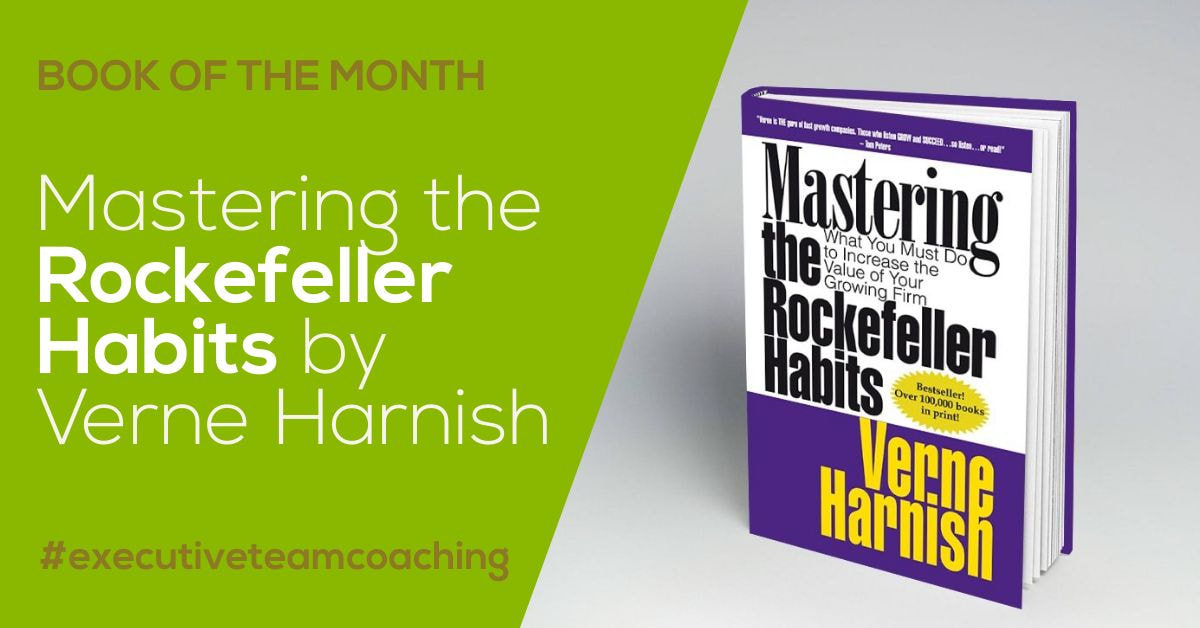
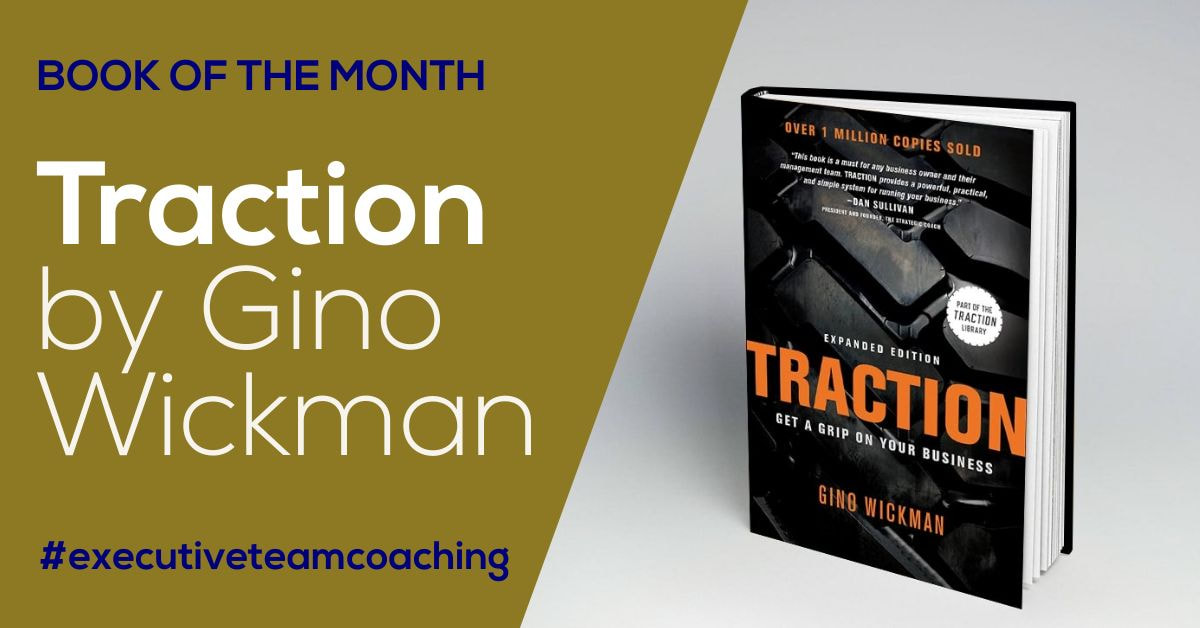


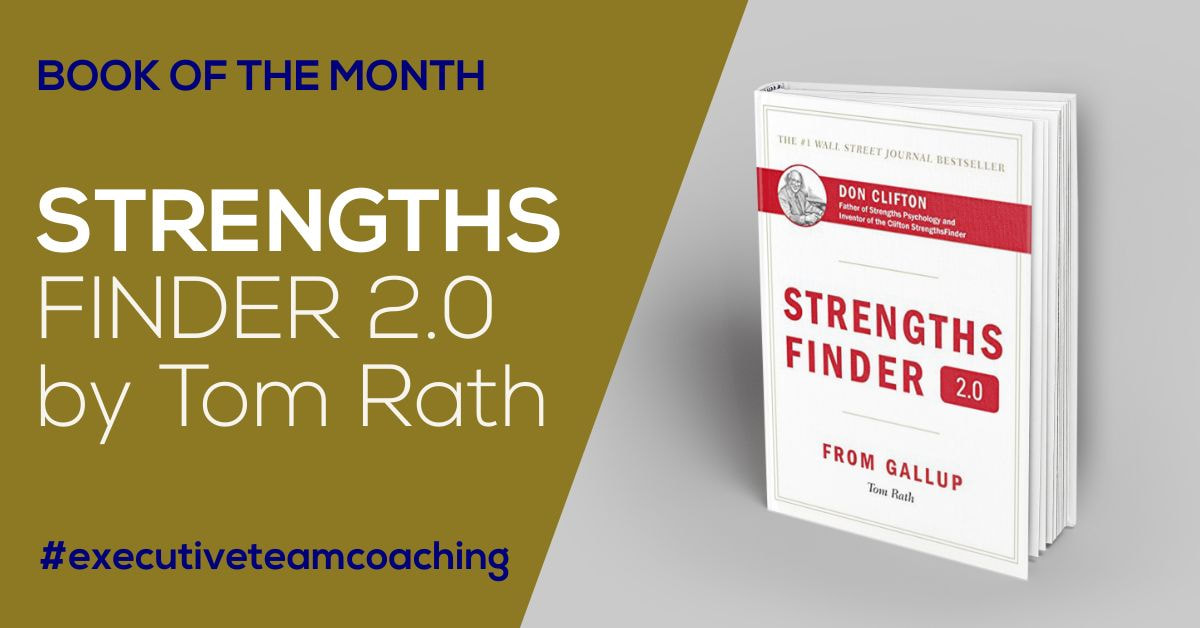
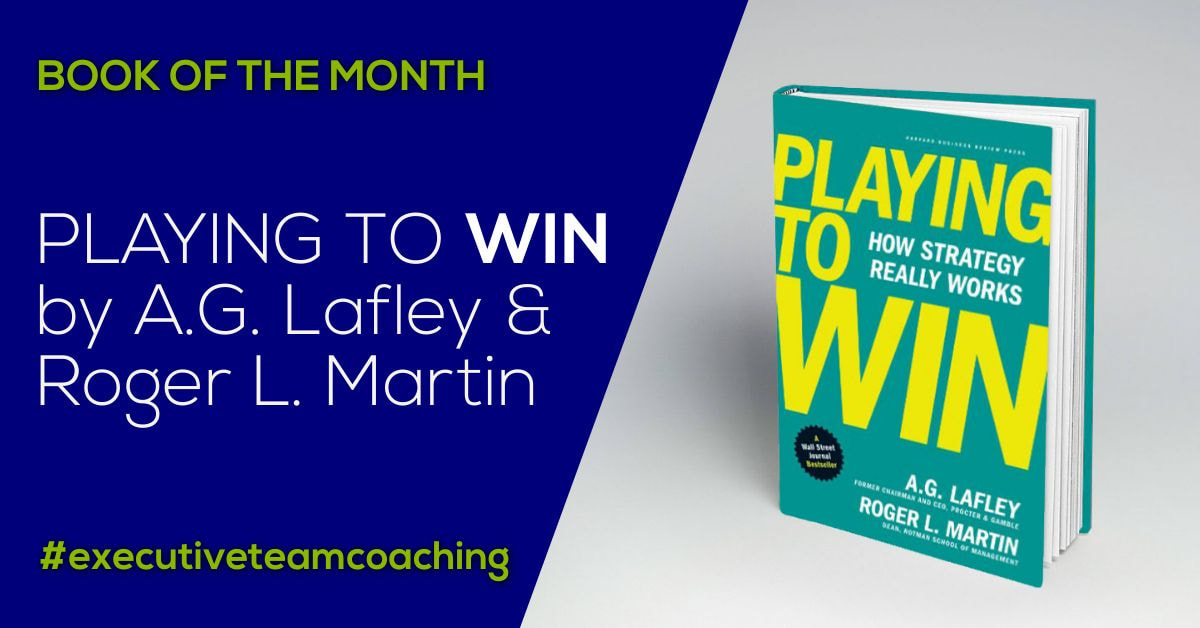
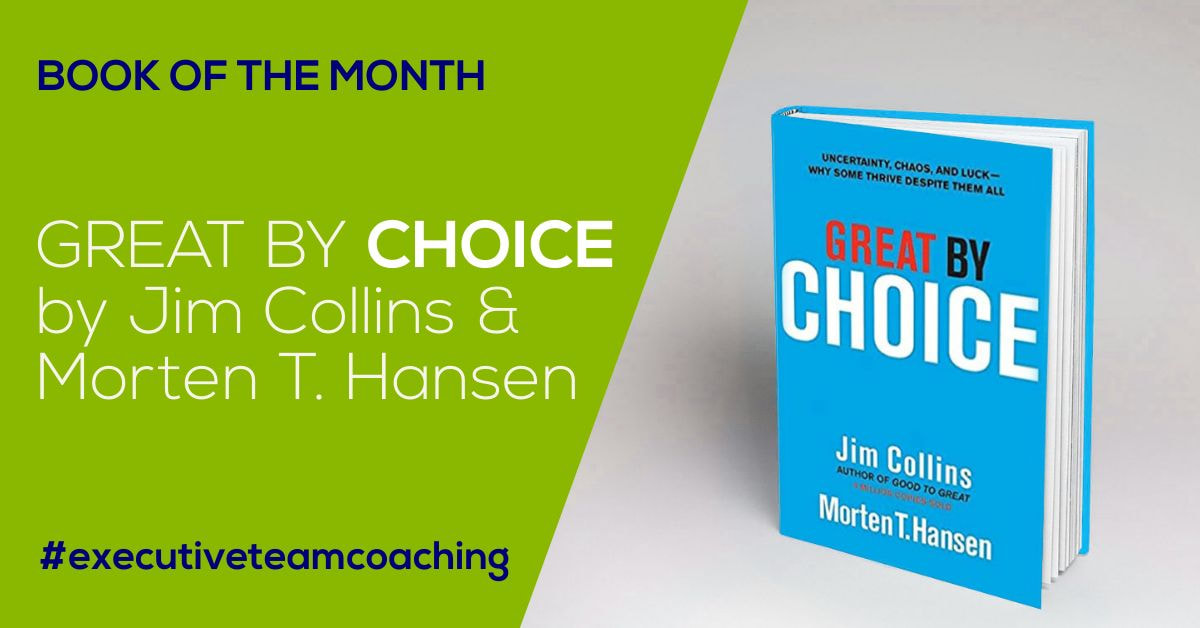
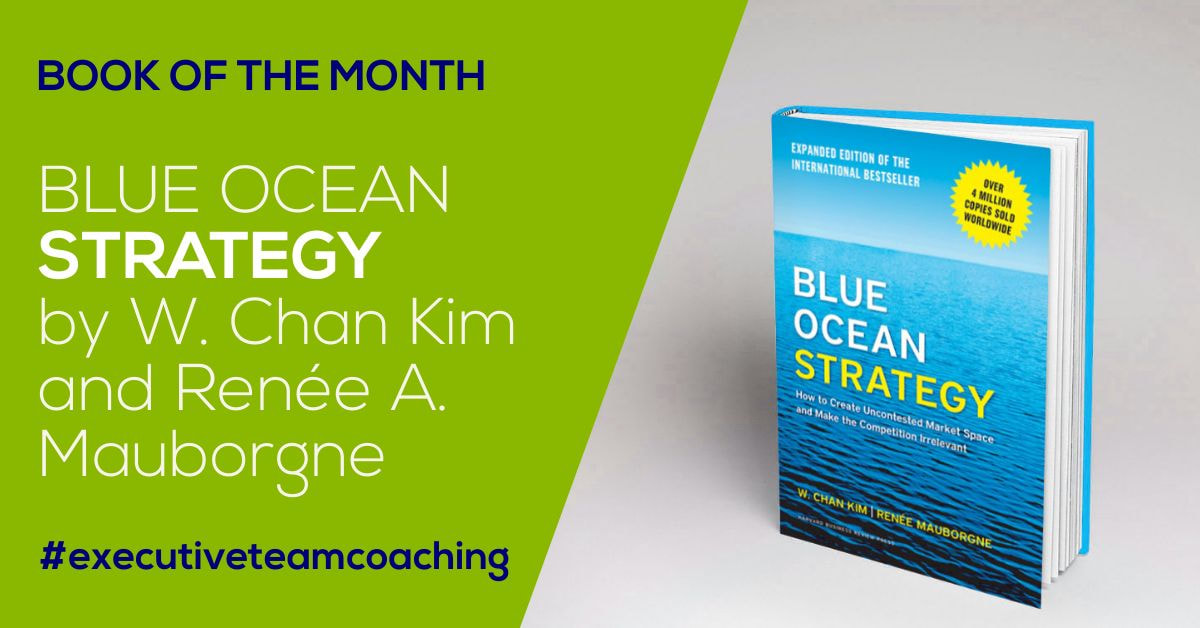



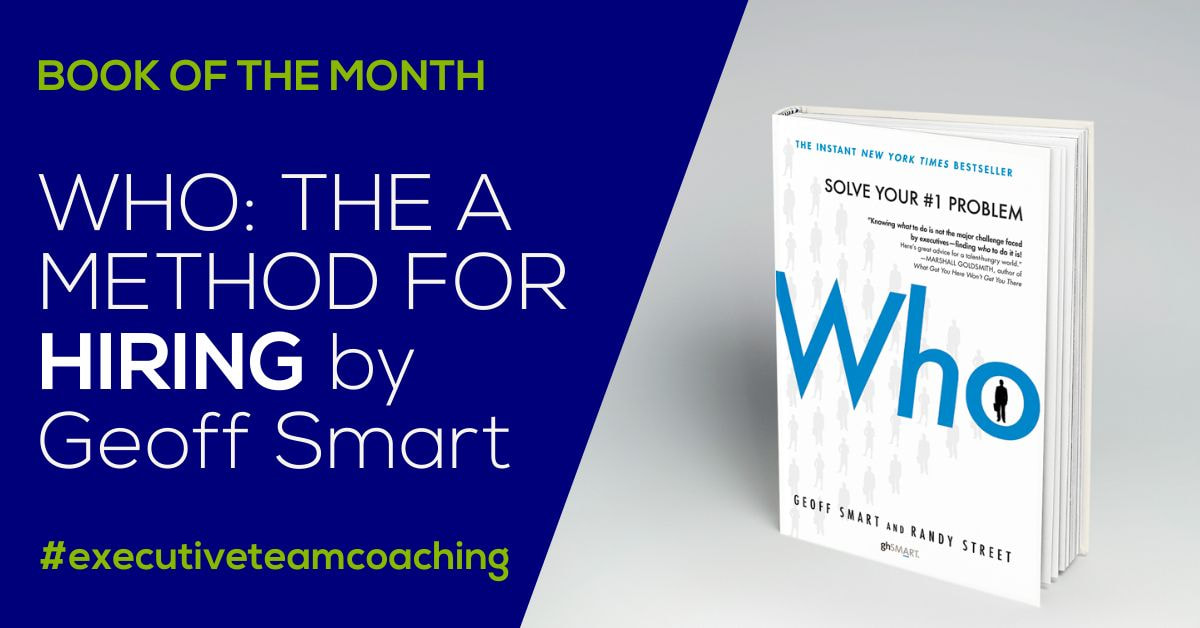


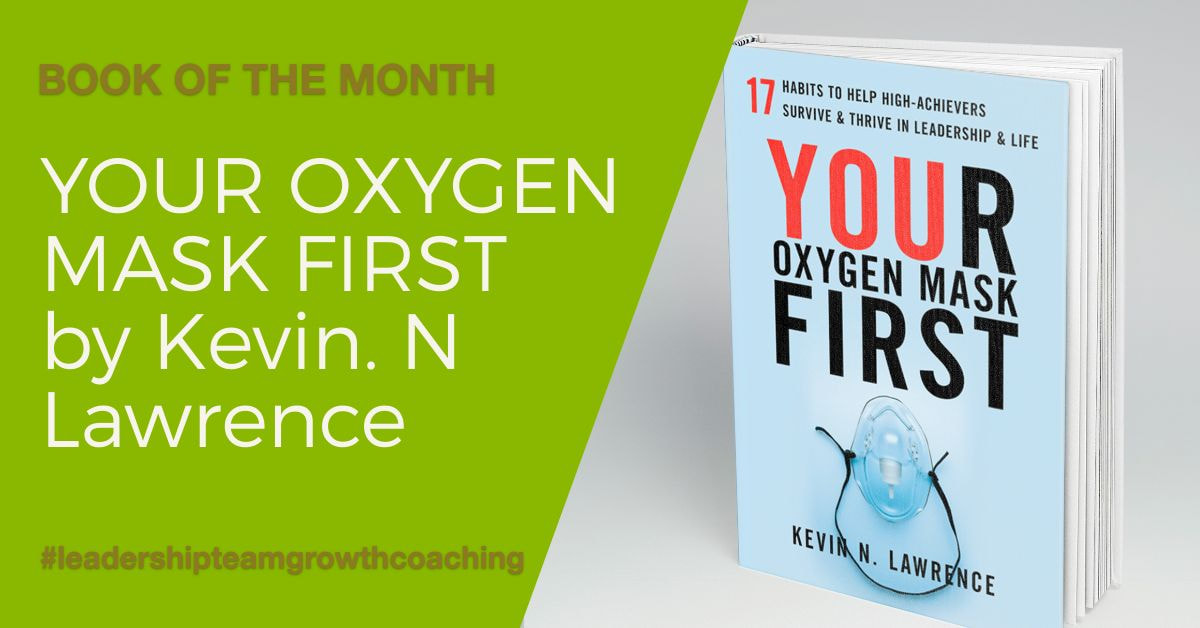
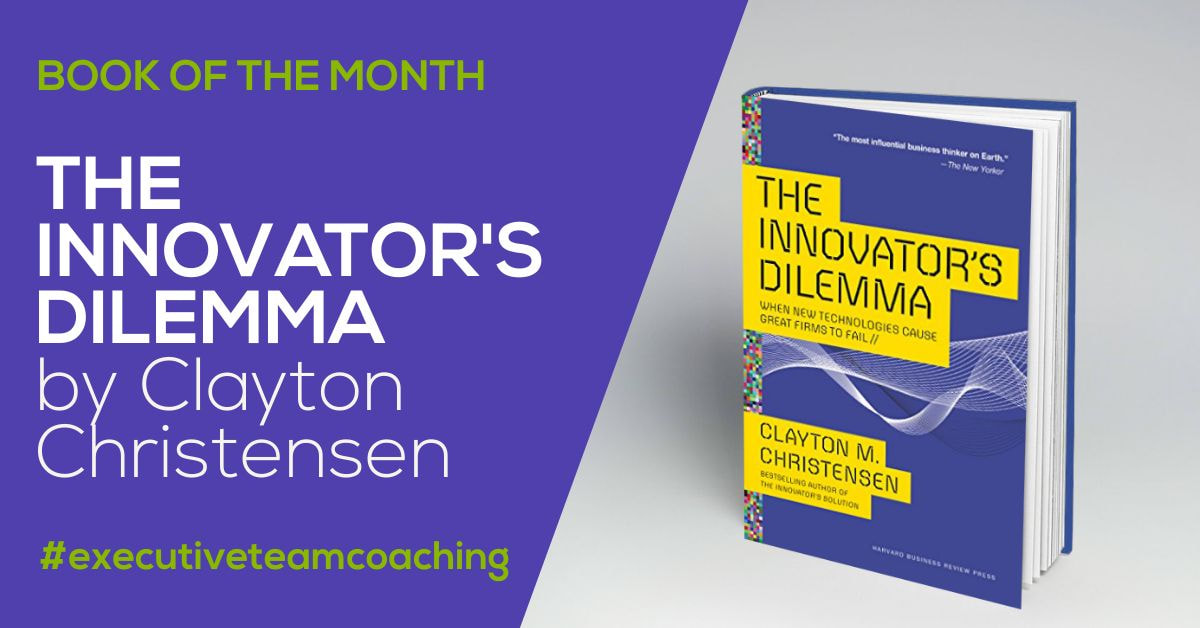
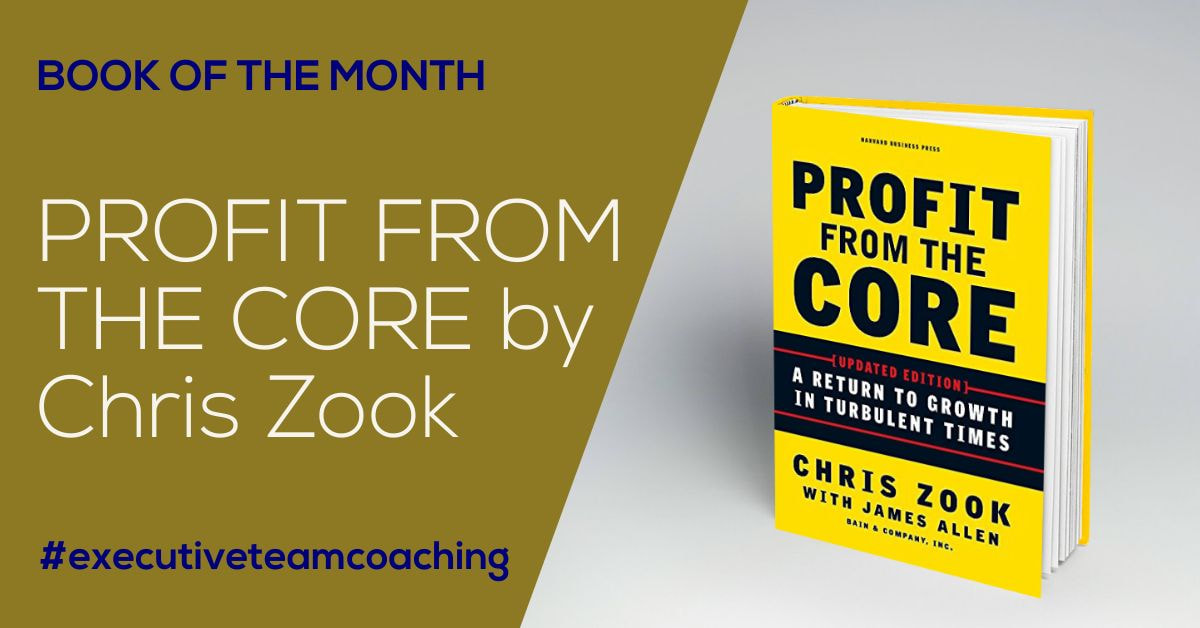
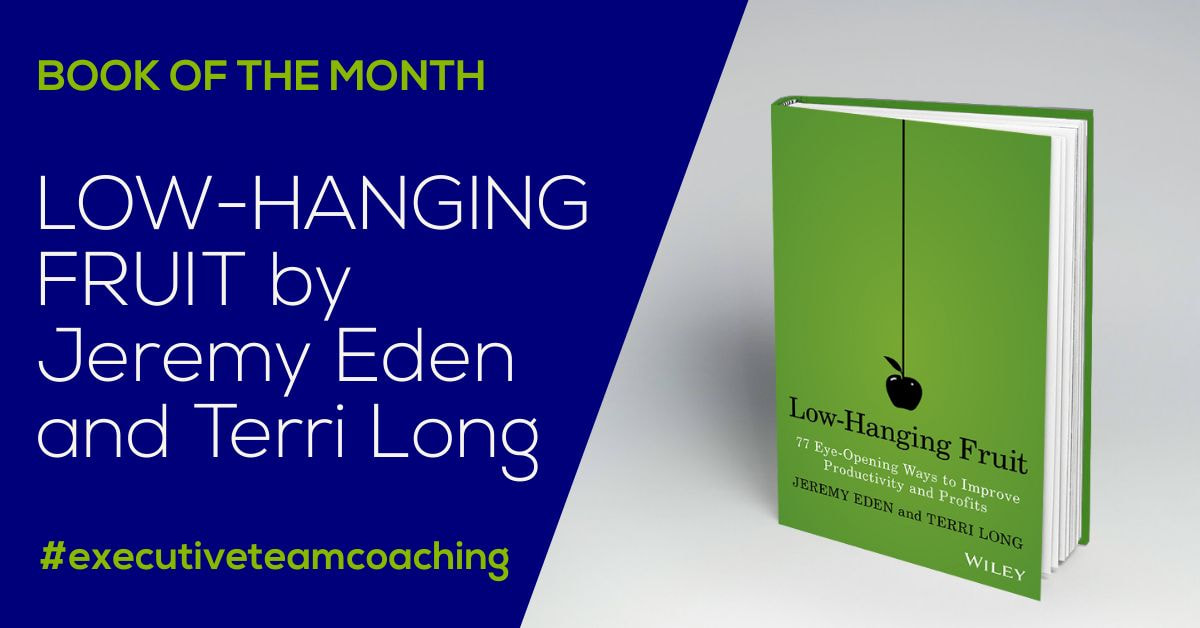
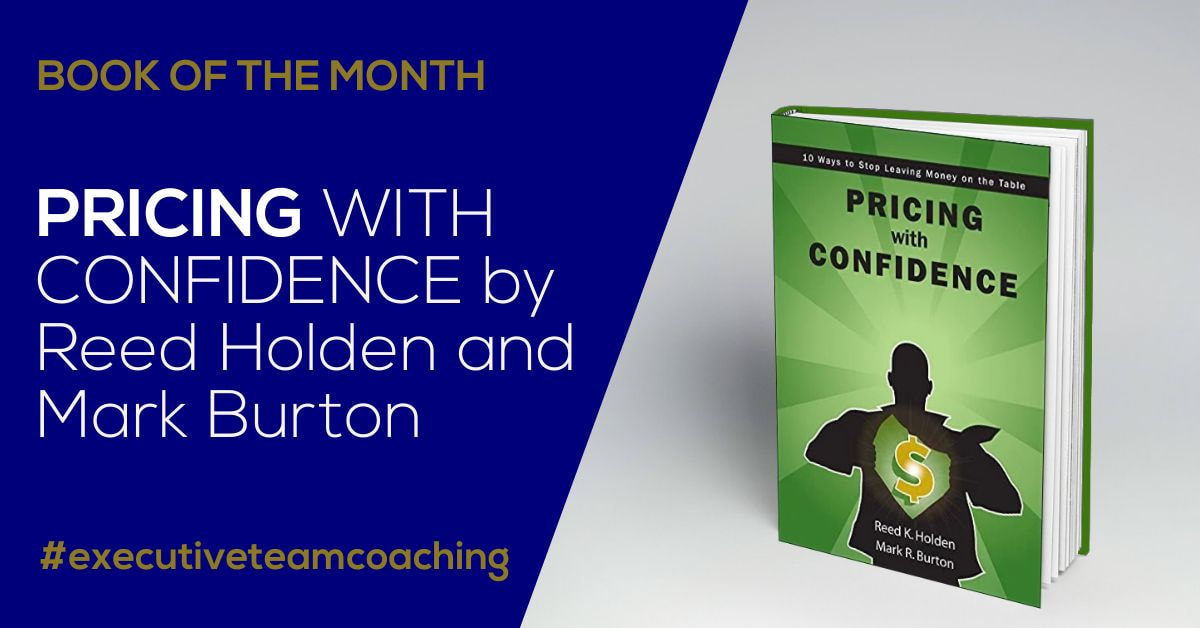


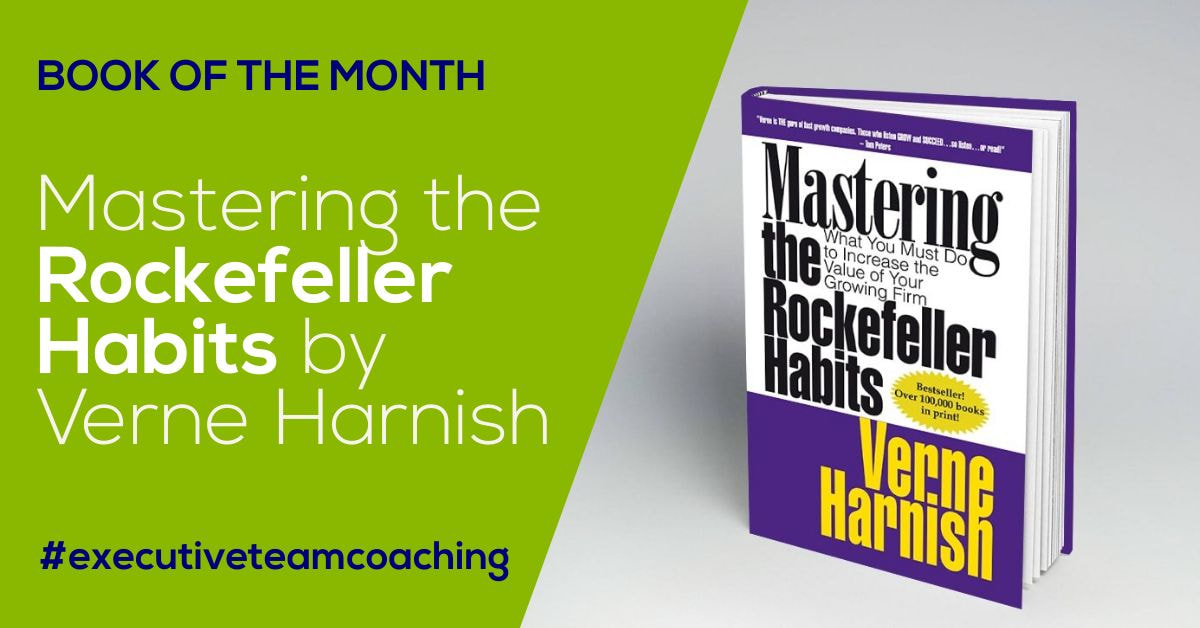

 RSS Feed
RSS Feed
